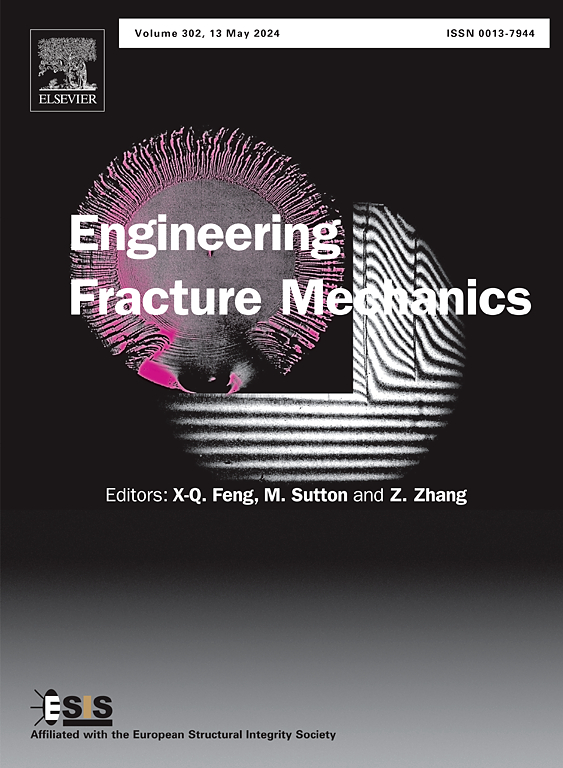Evolution of the breakdown pressure and fracture induced by water-/liquid CO2-based indirect fracturing
IF 4.7
2区 工程技术
Q1 MECHANICS
引用次数: 0
Abstract
Indirect fracturing represents an innovative approach for the extraction of coalbed methane (CBM) from broken-soft coal seams, with the primary objective being the penetration of fractures and the generation of a complex fracture network with high conductivity within the coal. To investigate the impact of borehole-interface distances on breakdown pressure and fracture characteristics, as well as the suitability of liquid CO2 (L-CO2) for CBM extraction via indirect fracturing, a series of fracturing experiments utilizing water and L-CO2 on coal-rock blocks were conducted. The findings indicate that reducing the borehole-interface distance can lower the breakdown pressure and acoustic emission (AE) energy, while enhancing the complexity and roughness of fractures in coal; however, it may also impede fracture penetration. In comparison to water-based fracturing, L-CO2-based fracturing significantly decreases the breakdown pressure and AE energy, resulting in a greater number of rougher fractures in coal. Utilizing fracture mechanics theory and the physicochemical properties of fluids, the mechanisms by which borehole-interface distance and L-CO2 influence breakdown pressure and fracture characteristics were thoroughly analyzed. This study offers theoretical insights for CBM extraction employing water- and L-CO2-based indirect fracturing techniques.
水/液co2基间接压裂破裂压力及裂缝演化
间接压裂是一种从破碎的软煤层中提取煤层气(CBM)的创新方法,其主要目标是穿透裂缝,并在煤中形成具有高导电性的复杂裂缝网络。为了研究井眼-界面距离对破裂压力和裂缝特征的影响,以及液体CO2 (L-CO2)对间接压裂开采煤层气的适用性,在煤岩区块进行了一系列水- L-CO2压裂实验。结果表明:减小井眼-界面距离可以降低破裂压力和声发射能量,同时提高煤层裂缝的复杂性和粗糙度;然而,它也可能阻碍裂缝穿透。与水基压裂相比,l - co2基压裂的破裂压力和声发射能量显著降低,导致煤中出现更多的粗裂缝。利用裂缝力学理论和流体的物理化学性质,深入分析了井眼-界面距离和L-CO2对破裂压力和裂缝特征的影响机理。该研究为采用基于水和l - co2的间接压裂技术开采煤层气提供了理论见解。
本文章由计算机程序翻译,如有差异,请以英文原文为准。
求助全文
约1分钟内获得全文
求助全文
来源期刊
CiteScore
8.70
自引率
13.00%
发文量
606
审稿时长
74 days
期刊介绍:
EFM covers a broad range of topics in fracture mechanics to be of interest and use to both researchers and practitioners. Contributions are welcome which address the fracture behavior of conventional engineering material systems as well as newly emerging material systems. Contributions on developments in the areas of mechanics and materials science strongly related to fracture mechanics are also welcome. Papers on fatigue are welcome if they treat the fatigue process using the methods of fracture mechanics.

 求助内容:
求助内容: 应助结果提醒方式:
应助结果提醒方式:


